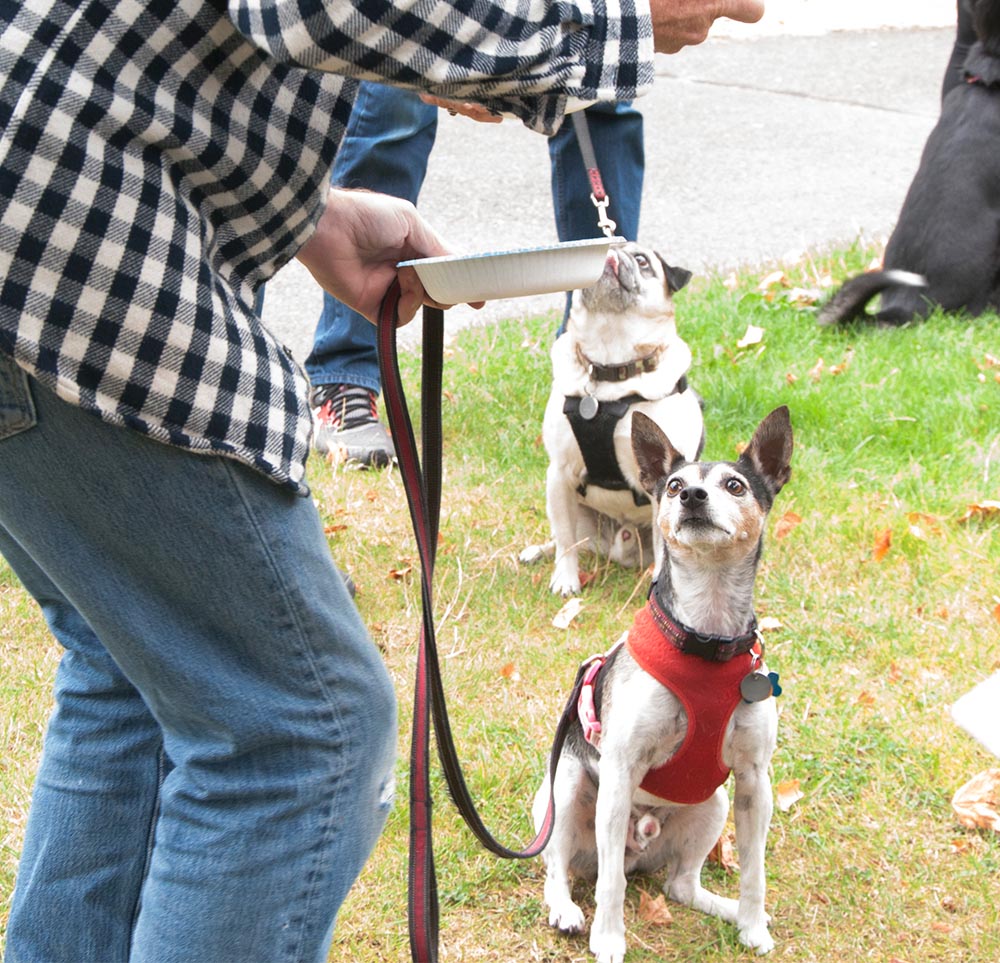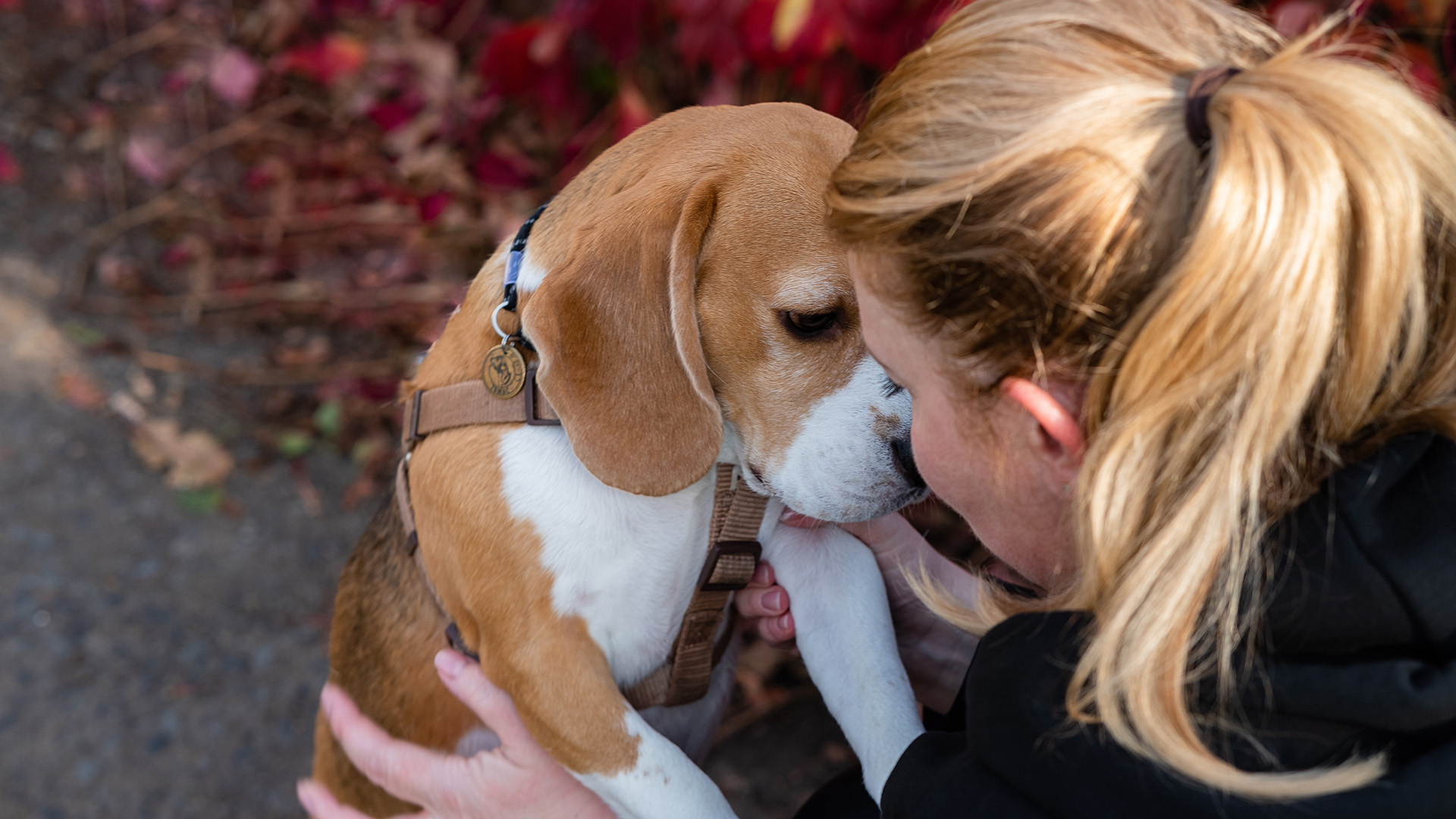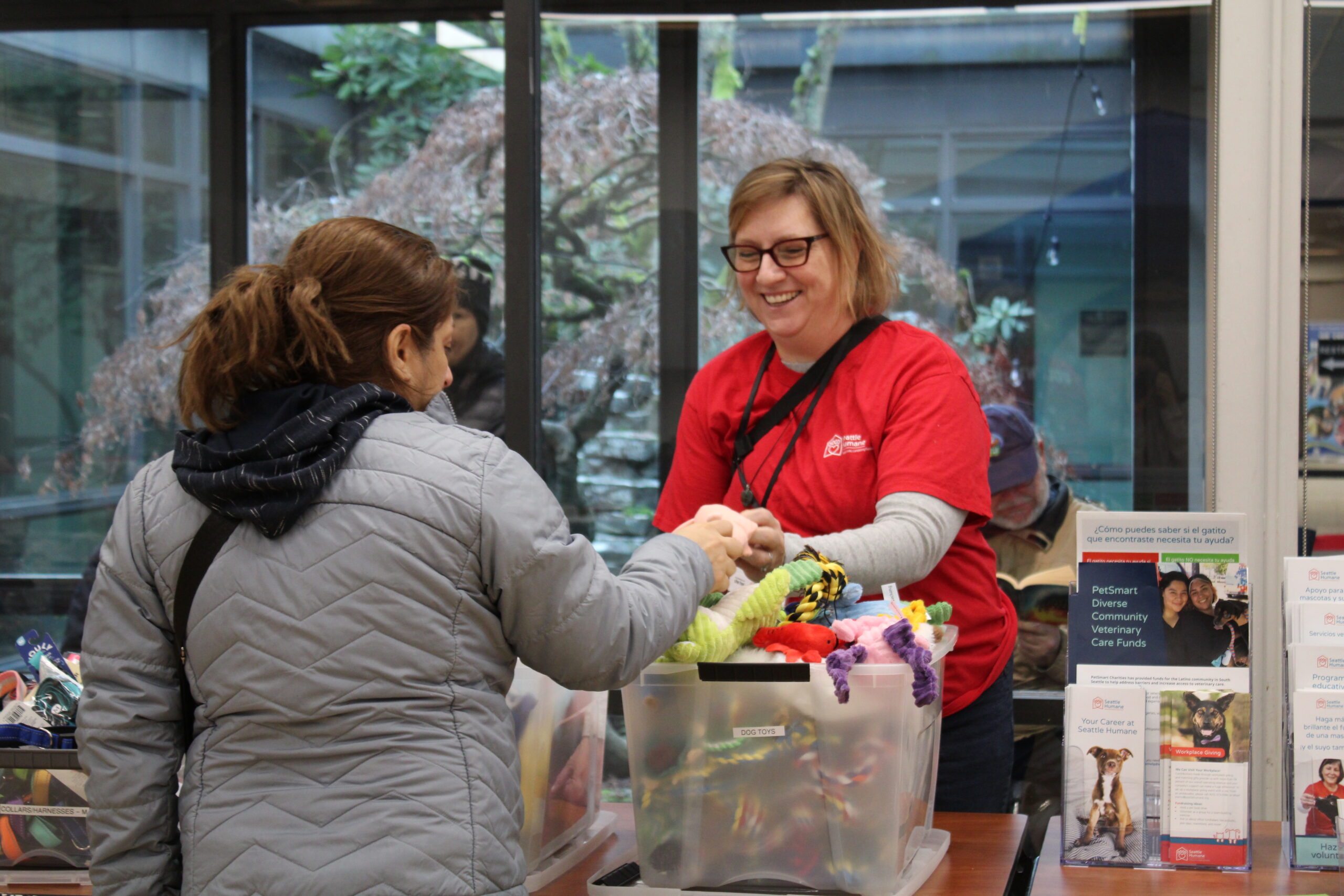The holiday season is a time of year where shelters everywhere experience many “gift adoptions.” While the thought of surprising your loved ones with a long anticipated furry friend might be heartwarming, many of these gift adoptions don’t work out. Why? Because many gift adoptions are impulsive. They can also be forced – where potential adopters feel pressured to pick any cute animal just to put him or her under the tree.
Instead of bringing home a pet for Christmas, we suggest purchasing a gift certificate from Seattle Humane. This way, you’re still surprising your family with an adoption, while giving your family time to search for your perfect furry friend! You’ll also be able to include them during the exciting search process.
But sometimes that PURR-FECT pet comes along, and you just can’t let go of him or her. If your home has resident pets, follow our pet tips below for a seamless introduction:
1. Introduce dogs in a neutral environment.
Dogs should be introduced in a neutral environment. Seattle Humane requires all dogs meet prior to introduction. But before bringing home your new family member, be sure to let the dogs meet again in a park.

Leash both the dogs and introduce them in a calm area. Have one person handle one dog each. Make sure to keep walking until your dog’s body language is calm and relaxed. Keep leashes loose as tense leash can make your pet anxious.
Once the dogs are showing curiosity about each other, allow them some sniffing time. Treat good behavior in both dogs promptly. If the dogs lash out at each other, pull them away and resume walking.

Typically, dogs will become at ease with each other after a good walk. But sometimes when taking them home, resident dogs may exhibit territorial behavior. Do not punish dogs for being aggressive. Remember that the introduction process is highly variable with each dog. Be patient and remain positive.
2. Introduce cats to resident pets by scent.
Cats should be introduced to resident pets by scent. Confine resident pets in one room and allow the new kitty to sniff around the house. Once kitty is adjusted to the new smells, confine him/her in a room of his/her own. See the picture below for room inspirations! Then allow resident pets to sniff out the house.
Once a day, rotate the pets. Confine and allow resident pets to explore kitty’s room. While resident pets are sleuthing, allow kitty to smell out the rest of the house.

This process should take anywhere from 1-3 weeks depending on the pets’ personalities.
Resist the urge to throw the pets in one room to “work it out.” This ironically almost never works out and instead reinforces unwanted behavior. Also, never confine a cat in a crate while allowing resident pets to sniff around the crate.
3. Create positive associations with their scent.
To encourage a good relationship between pets, make sure to give them plenty of treats for good behavior. Do not yell, scold, and spank if they lash out on each other. This will make them associate each other’s presence with fear and anger. Instead, pull them away from each other and give them their needed space. Try again later, and promptly reward any good behavior.

For kitties, feed new cats in their allotted room. And feed resident pets outside the kitty’s door. Once they seem comfortable, you may put kitty’s bowl on one side of the door, and resident pets’ food on the other side.
4. Allow sneak peeks.
For kitties and resident pets, once they’re comfortable with each other, allow sneak peeks. You may carry kitty and allow them to see each other. Reward good behavior. Moderate hissing is normal. But if fearful behavior comes out, put kitty back in the room. Try again the next day, and reward good behavior.

Another good method is using a baby gate and keeping kitty on one side, and resident pets on the other. This allows them to get full view and interactions, while still providing a safe barrier.
5. Exercise the dogs regularly.

If the dogs are tired out from exercise and play, a seamless home transition is more likely. Cooped up dogs are more likely to lash out from frustration.
6. Do not leave pets unattended.
Even though your pets might look like they get along, do not leave them unattended for a few months. You never know how pets will interact once you leave.

Instead, continue to confine your new pet in their own space, while leaving resident pets in their usual set up.
7. Be patient and get your family on board.
Introducing pets to each other is a long process that requires lots of individual and team effort. Do not be discouraged if your pets need some time to get used to each other.

Just keep trying, be gentle, slow down, and be positive. Also be sure to talk to your family to get a game plan on board.









